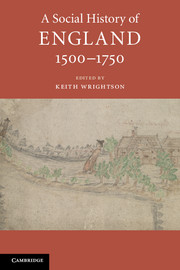Book contents
Introduction: Framing Early Modern England
Published online by Cambridge University Press: 28 May 2018
Summary
In sixteenth- and seventeenth-century English, the verb ‘to frame’ meant to construct, join together, shape, form, or devise and invent. ‘Framing’ was ‘the action, method or process of constructing, making or fashioning something’. All historical periods are constructed or devised in this manner. Sometimes they are bracketed by key events deemed to be of particular symbolic importance: happenings ‘to which cultural significance has successfully been assigned’. Sometimes they are defined in terms of broader processes that are cumulatively transformative: the ‘rise’ of capitalism or individualism, for example, or the ‘decline’ of magic or of the peasantry. But whatever the case, historical periods reflect perceptions of the shape of the past that originate in particular attempts to give it form and meaning, gradually become conventional, and persist while they retain the power to persuade us that they help make sense of it.
The term ‘early modern’ has become the conventional English-language way of describing the sixteenth, seventeenth and early eighteenth centuries: the period covered in this volume. It is relatively novel in use. The orthodox view is that it emerged from the 1940s, and became more widely adopted from the 1970s in both history and adjacent disciplines (notably literary criticism of an ‘historicist’ cast). Despite this success, in recent years it has become unusually contested. Those who dislike, or are at least uncomfortable with, its widespread employment tend to emphasise a number of objections. First, it is ‘a quite artificial term’, unknown in the period to which it refers. It is a retrospective label, ‘a description born of hindsight’, imposed upon the past. Moreover, it has been uncritically adopted by those unaware of its deficiencies and implications. It is vague and elusive in definition and inconsistently applied. Its chronological boundaries vary not only with country but also with topic. It may be meaningful when addressing some themes, but is inappropriate to others. It is geographically restricted in its applicability, making more sense when applied to those parts of Europe in which these centuries witnessed significant change than to those that retained more ‘traditional’ structures, and is largely irrelevant outside the European context. While it has been widely adopted in the historiographies of anglophone and German-speaking countries, it is more rarely used elsewhere. Above all, the very notion of an ‘early modern’ period allegedly embodies teleological assumptions about the course of historical change.
- Type
- Chapter
- Information
- A Social History of England, 1500–1750 , pp. 1 - 16Publisher: Cambridge University PressPrint publication year: 2017



